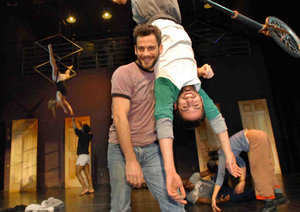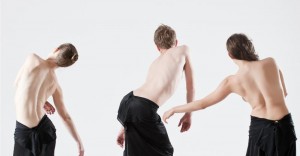PrimeGlib Editor’s remarks: Below is a post by Marc Kirschner published July 16, 2010 on TenduTV. It is reposted here with permission. It illustrates the failure of the Dance Critics Association to actively advocate for dance and dance criticism. To see a potent and lively example of how a community of critics can effect the amount of ink an arts media receives, visit http://www.americantheatrecritics.org/ While features like Members Blogs and Links, and Members Milestones offer huge value for current members and encourage new members, other features such as Perspectives in Criticism may be of interest to the general public as well as to the theater community who may wish to know just who their critics are and what qualifies them to write about theater. So…
Back to the Future Part II: Dance Critics and Technology
By Marc Kirschner
Posted by tendutv in Advocacy, Distribution, Newspapers, Technology, TenduTV, The Dance World on 07 16th, 2010 | one response
In my response to the NEA’s Audience 2.0 survey, I listed a number of key technologies that had permeated the consumer market place and changed audience behaviors since the survey began. I also asked a simple, but important question:
“Once a dance company has actionable information and presumably wants to act, can it?”
With the Dance Critics Association (DCA) conference coming up, I decided to implement similar methodologies in evaluating the dance world’s very important “fourth estate”, which has been under extreme pressure over the last few years. Dance critics need to be supported, and we need to preserve this valuable sector of our industry. When intelligent and skilled writers have nowhere to publish, artists and audiences suffer.
It’s time for dance critics to take some steps on their own.
Many critics today, even those with a long-standing online presence, are further behind the technology curve than their artistic counterparts. In some cases, the basic infrastructure and capabilities supporting their websites haven’t been upgraded in over ten years.*
Yet, when we’ve spoken to critics, or listened in on panel discussions, they talk about their websites definitively. They believe that since they have websites, people should be reading their reviews, and since they don’t, there must not be an audience for dance. They never consider that failure to address basic requirements via concepts such as metadata, search optimization, syndication, analytics and even a minimal grasp of aesthetics are all acting against their ability to be seen by their audiences. The facts are beyond subjective. For example, one website doesn’t even resolve its domain name properly – if you type in the web address without typing “www.” before the domain name, you get a three-year old version of the site. Another claims millions of annual hits (a long-discredited metric), while industry-recognized third-party analytics services show fewer 10,000 unique visits (a more credible metric) per year.
This is a troublesome situation. While there certainly are many factors that continue to contribute to the plight of dance critics, a majority of which are out of the criticsphere’s control – for example, short-run seasons that make reviews past news before they’re even printed, what can be done doesn’t appear to be part of the conversation. Organizations continue to host workshop after workshop to empower aspiring writers to hone their craft, nothing is being done to help writers fulfill their purpose. While there is always a concern about cost, many of these websites would take a multi-generational leap forward simply by transitioning to even the simplest free blogging platform. A 1-hour WordPress workshop could do miracles to advance the field.
The DCA needs to take a public leadership role in this area rather continually mourn bygone days and lost jobs, while simultaneously pleading for someone else to pull them to safety (which was the general gist of the DCA panel at the Dance/USA conference – one of the panelists actually said that they needed someone to give them an audience). While the DCA conference is full of planned discussion about a wide variety of styles of dance, there is not a single minute of necessary basic skills training or conversation.
So, where should the DCA go from here? The DCA needs to
• Reach out to and grow its membership to include younger, developing writers who are more adept at using technology. Experienced writers can share their knowledge and developing writers can contribute their skills in exchange.
• Advocate and empower modernization of the infrastructure of digital dance criticism, not only among its members but among funders as well. The DCA should also add a technology advisor to the organization.
• Educate their members on contemporary measurement metrics and analytics packages. It is vital to be able to discuss reach and traffic using the same language and metrics that other stakeholders (advertisers and companies) require.
• Be a part of the conversation, which is already taking place here and here.
There can be no delay. The future must be now.
*In order to look at how websites once were, we used web.archive.org, aka “The Wayback Machine”. We would have gone back in time, but the DeLorean is in the shop.
For more at TenduTV: http://blog.tendu.tv/
http://blog.tendu.tv/2011/01/06/10-things-dance-companies-should-be-talking-about-in-2011-and-how-we-did-in-2010/
http://blog.tendu.tv/2010/07/16/back-to-the-future-part-ii-dance-critics-and-technology/


